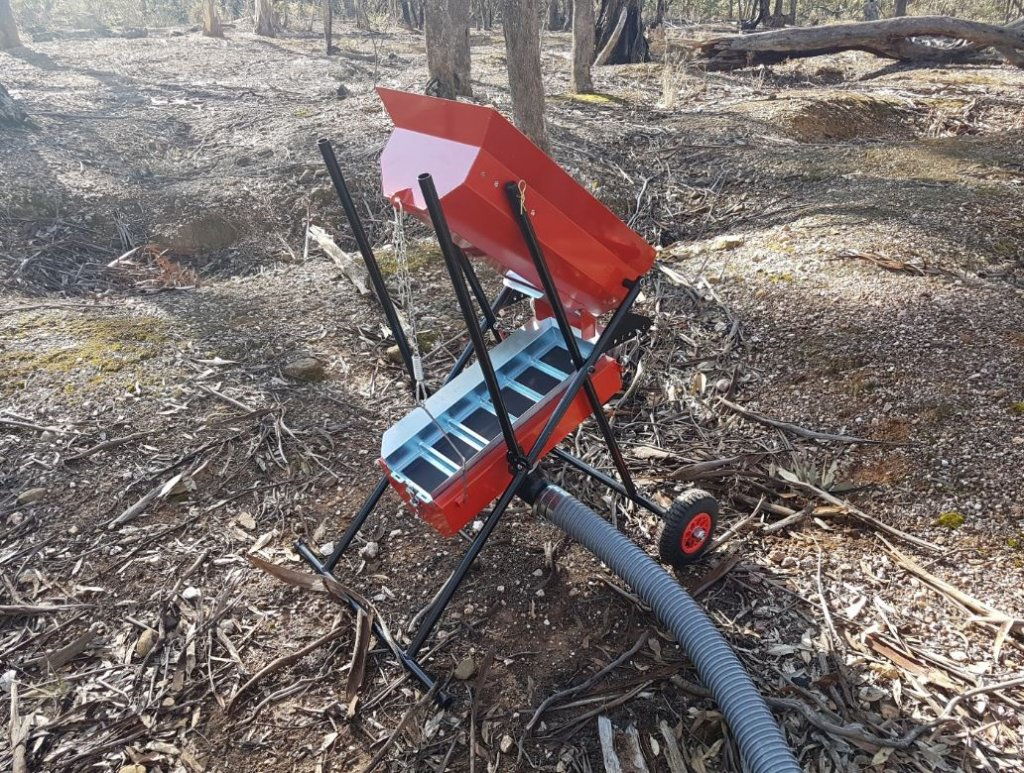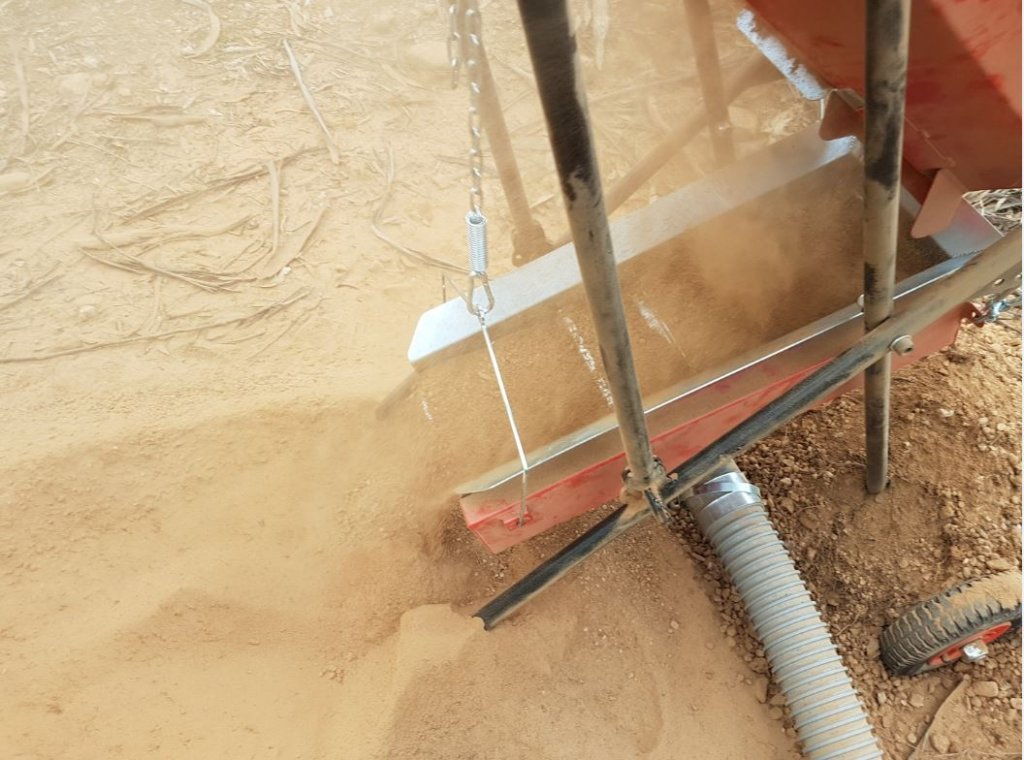Hi Falcon,have had a few more thoughts and questions on your dry blower.The first is the mesh size of the hopper grizzly mesh.How big is too big and how small is too small? My feeling is if the gaps were too big then the sluice would load up on particles too heavy to clear the end of the sluice.Too small and you will be missing some potential gold.
And what of the material that is cast off and doesn't make it thru the GB mesh?There is a small potential for small nuggets to be missed and a greater potential of the larger clods that don't make and are shed,also missing potential gold.I am very familiar with the sort of dirt in the the Triangle and particularly of mullock heaps.Anyone who has sampled and panned triangle dirt will know it is very clayey and requires lots of puddling to break it down before final panning,thus the old puddlers you find throughout the area.What I am getting at is that this larger material that doesn't go through your grizzly can and probably will have gold particles stuck to them or encased in them.
Second question I wanted to ask was, after doing your inaugural run on the mullock heap did you isolate and gather the tailings and spillovers and pan them down to check if any gold was lost from the Dblower?
Thirdly ,I can understand how the airflow is distributed and directed to create disturbance of the material and the settling out of the heavier particles,but what I don't fully grasp is the vibration side of things,since, as I gathered, there is also a vibration element in the processing of the screened dirt.
That's about all for now ,but will probably have further thoughts and questions further down the line knowing me.Cheers,Trev.('TREV's GOLD and OUTBACK ADVENTURES' ....YouTube).

























